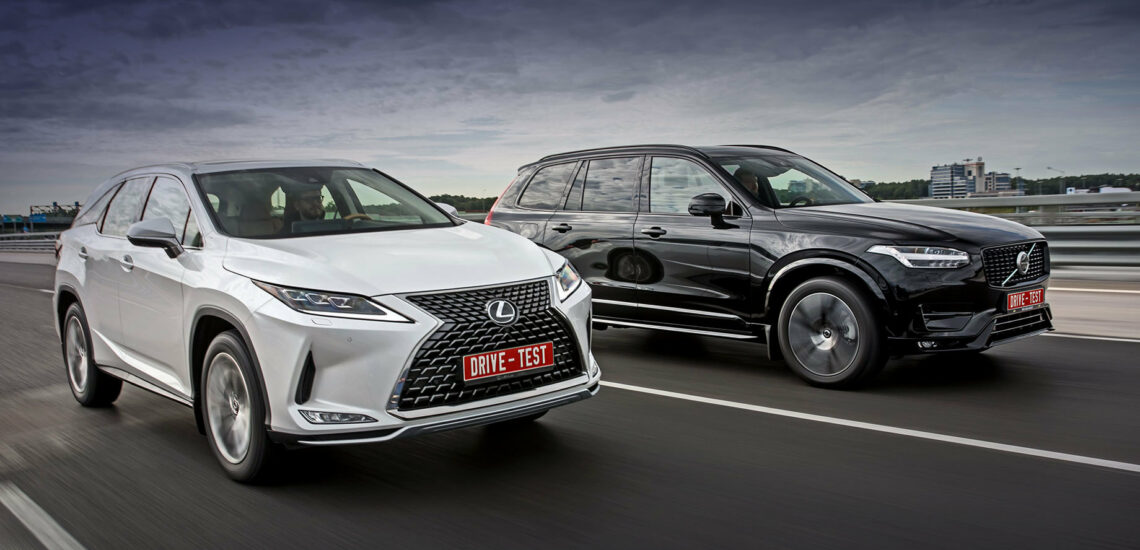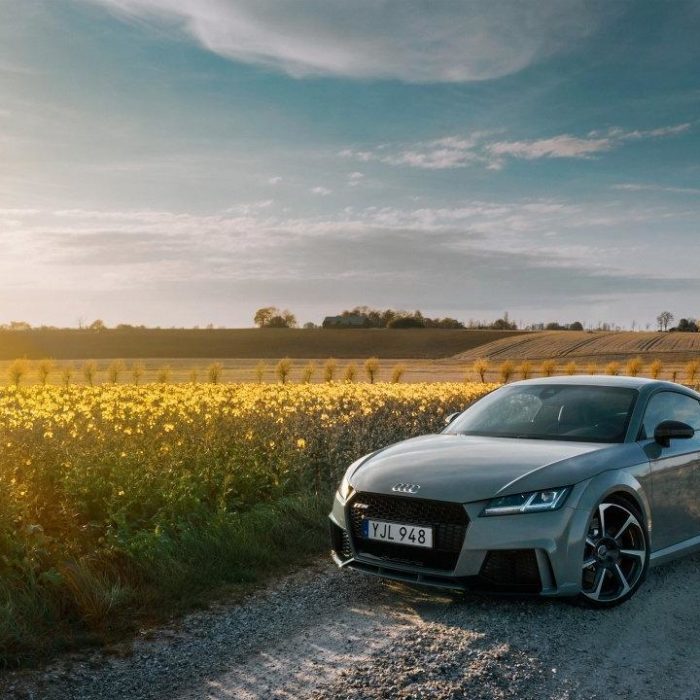Lexus RX — однозначный лидер среди премиальных среднеразмерных кроссоверов. Ближайший преследователь, BMW X3, продается на треть хуже. Между тем, среди почти десяти тысяч проданных в 2019 году RX также есть 162 удлиненных экземпляра версии RX 350L. Длина пять метров; три ряда сидений и только богатое оснащение — конкуренция уже в сегменте больших кроссоверов. Но в нем семиместный Лексус хуже всех по продажам. Для выяснения причин отказа мы взяли за эталон Volvo XC90, аналогичный по габаритам и цене. Причём с дизелем D5, которого у Лексуса нет в принципе.
Шведский мастодонт выглядит консервативно даже с обвесом R-Design. Обе машины укоренены в 2015 году, но Лексус сохранился лучше. Не всем нравится смелость его форм, но азиатская необычность привлекает больше внимания, чем скандинавская скупость. Удлинение заднего свеса более чем на десять сантиметров почти не испортило пропорции. Плюс кузов Volvo собран хуже: зазоры между панелями не такие равномерные.
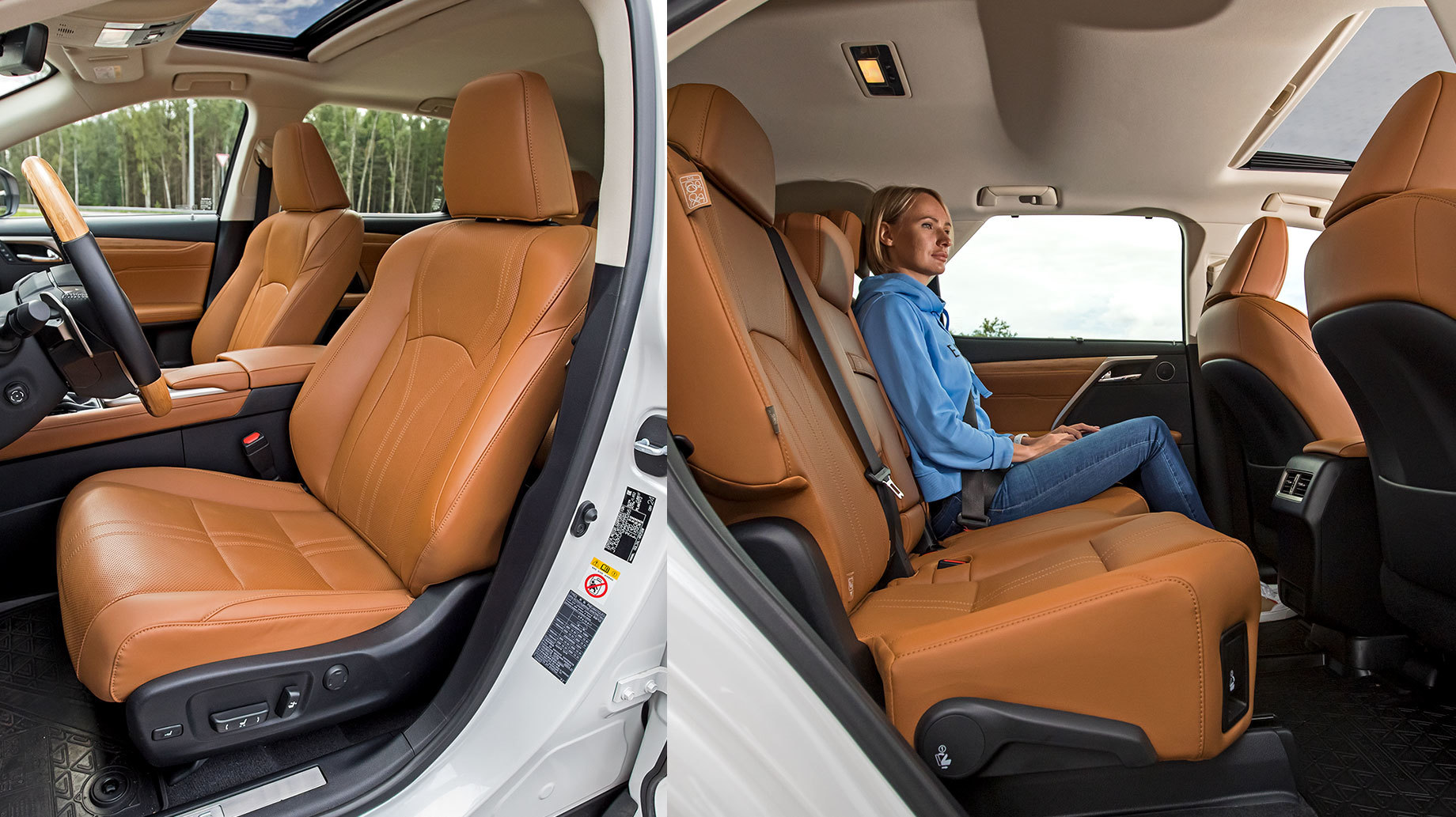
Говорят, что главным покупателем семиместных кроссоверов являются американские мамы, которые водят своих детей в школу. Кто из пары лучше подходит на роль заменителя минивэна? Второй ряд в обеих машинах просторный, хотя в Volvo пассажира скорее посадят между двумя детскими креслами, стоящими на креплениях Isofix. Если у XC90 расстояние между центрами их внутренних кронштейнов достигает 54 см, то у RX оно составляет всего 47. В то же время все три задних сиденья в Volvo можно перемещать, регулировать и складывать по отдельности. Однако отсутствие тоннеля и приветливое мягкое сиденье делают пребывание на втором ряду Lexus более приятным.
В любом случае, чтобы попасть на задний ряд, приходится вручную складывать сиденья, но в Volvo механизм настолько тугой, что не каждая барышня справится. Для раскладывания шестого и седьмого сидений в XC90 приходится опять применять физическую силу, а RX щеголяет электроприводом. Но что это? Примерно через 15 секунд его работы два сиденья встают в разные положения — одно низко и далеко, другое выше и на 10 см ближе ко второму ряду.
Получается, что оба положения являются стандартными и могут быть выбраны повторным нажатием кнопки складывания при сложенных сиденьях. Но изменчивость ничего не дает тем, кого судьба задвинула на третий ряд. Ты все равно сидишь на заднице. Второй ряд следует сдвинуть вперед, чтобы сидящий на нем человек ростом 180 см упирался коленями в переднюю спинку. Потолок низкий, через мини-иллюминаторы ничего не видно, хотя спасибо за отдельную (третью) климатическую зону и дефлекторы.
Хотя Volvo короче на пять сантиметров, он дает больше места и комфорта «третьерядникам». Проход к сиденьям такой же узкий, но они более удобные, как-то поддерживают бедра и подходят не только для езды от школы до дома. Потолок выше, и пассажир среднего роста не упирается в него головой, как в Лексусе. Креплений Isofix на третьем ряду ни у кого нет. Отрегулировать температуру в шведской машине придется просить сидящих во втором ряду – и то, если доплатить за четырехзонный климат-контроль.
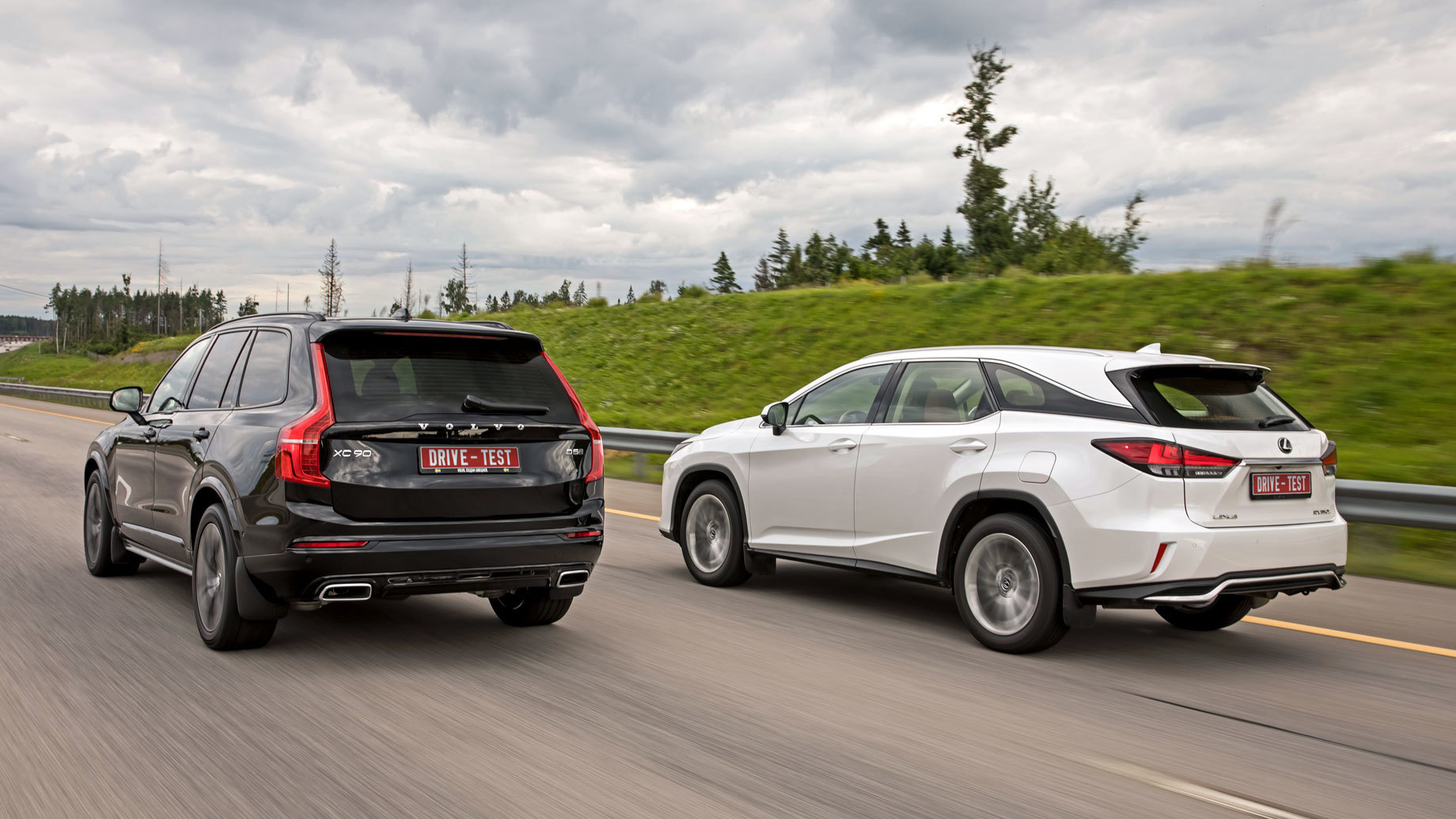
Но о тотальной победе шведской машины в категории «комфорт» не может быть и речи. Благодаря дизайну только со стороны кажется, что Вольво домашний, мягкий, уютный, а Лексус молодежно-спортивный. Подозрения могут усилиться из-за того, что у RX альтернативная рессорная подвеска, а наш XC90 комплектуется опциональной пневматической. При этом версия R-Design не предполагает перенастройки шасси: все стандартно. Колеса в обоих случаях 20-дюймовые, но у японской машины они заметно уже — 235 мм против 275 мм.
Ездит Volvo жестко по-немецки, не оставляя без внимания дефекты покрытия. Какие-то мелочи и крупные неровности сглажены — это не костотряс, жить можно. Впрочем, не ждите волшебства, ведь преимущества пневмоподвески проявляются только на бездорожье. Но мы еще вернемся к этому. XC90 адекватно реагирует на руль, слегка кренится: опять тевтонский дух. Колеи на асфальте заметно смещают широкие колеса с траектории. Справедливости ради, водителю намекают на отсутствие компромиссов еще на этапе примерки, когда его обтягивают жестким профилированным сиденьем.
В Лексус садиться удобнее, потому что пороги крохотные и прикрыты дверями, а вот колени от выпирающей в проем передней панели должны защищать шесты. Плюхнувшись в сиденье, растворяешься в нем, забывая о его слабо выраженной боковой поддержке. Мягчайший верхний слой, приятная кожа, дерево вокруг… Руль тоже мягкий на ощупь, но зимой эти обтянутые кожей места хвата подогреваются. Базовая конфигурация имеет электрическую регулировку рулевой колонки, которой нет в Volvo. Успокаиваешься настолько, что не бесят консервативные устройства без цифрового спидометра и неудобная мультимедийная система с античеловеческим тачпадом. На ходу с ним не так просто попасть в любой пункт меню.
Езда на удивление плавная — подвеска «распущена» настолько, что Lexus раскачивается вперед-назад при небрежном разгоне и торможении. Большинство мелких и средних неровностей плавятся в недрах пружин и адаптивных амортизаторов, а переключение шасси в режимы Спорт или Спорт+ почти не меняет картину. Раскачивание на волнах и многократные колебания неподрессоренных масс при превышении скорости 30-40 км/ч на лежачих полицейских дополняют картину «староамериканских» настроек. Руль не острый, с вялой реактивностью на прямой и практически отсутствует в повороте. В общем, убаюкивающая машина.
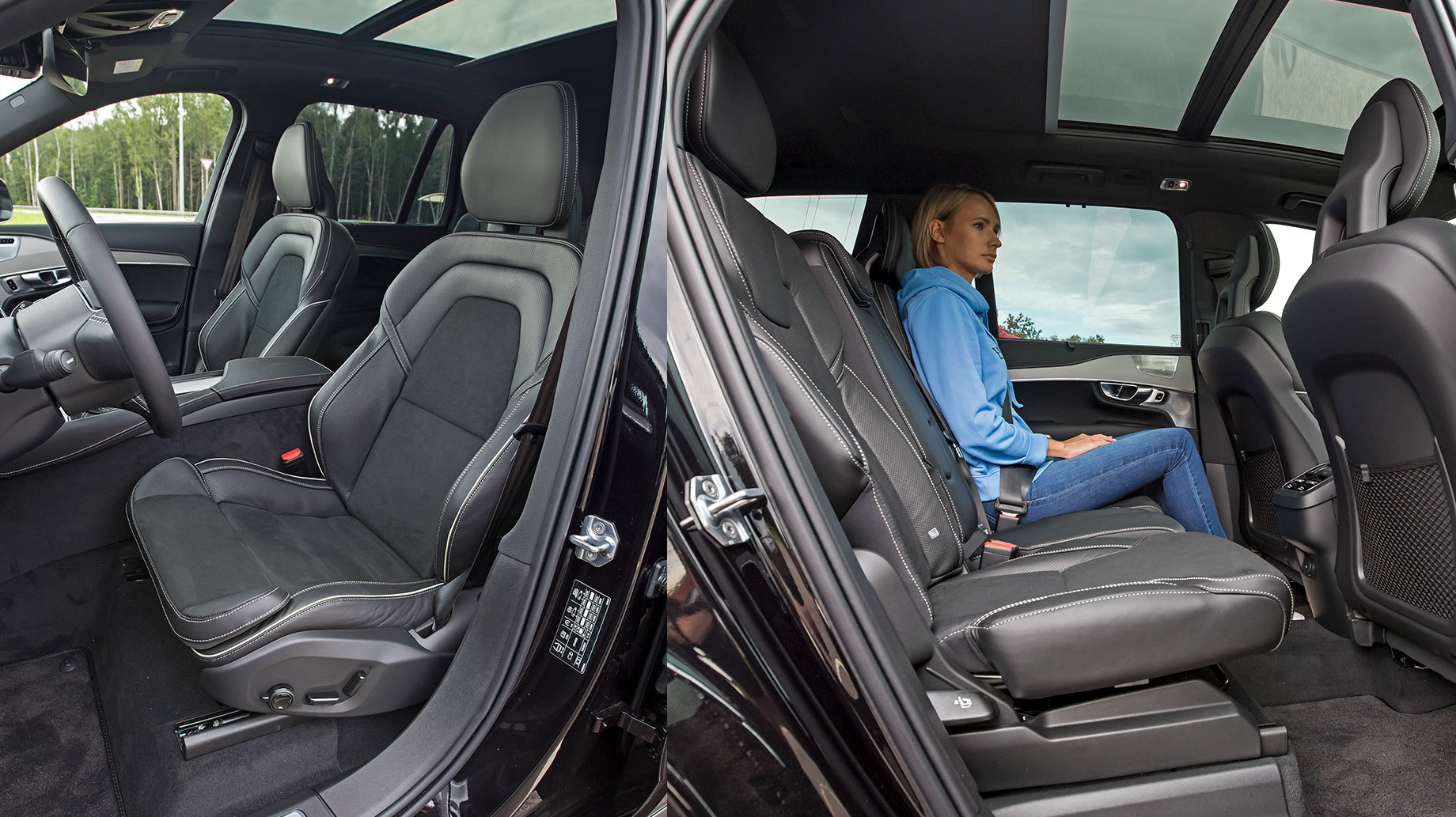
И довольно тихая. У Lexus шумоизолирующие стекла только спереди, но уровень внешнего и дорожного шума сопоставим с Volvo и его опциональным триплексом во всех четырех дверных окнах. Шведский дизель урчит тихо, но постоянно, а японский V6 слышно только при разгоне, когда обороты доходят до второй половины шкалы тахометра. Не жалеете: голос атмосферного двигателя приятный, весомый.
И кажется, что RX 350L разгоняется быстрее. Реакция на движение акселератора довольно живая, особенно в первой части такта — и в отличие от запаздывающей реакции дизельного Volvo. Впрочем, XC90 при любом стиле вождения сохраняет предсказуемость откликов, пусть и не спортивную. Под капотами обеих машин стоит одинаковая восьмиступенчатая автоматическая коробка передач Aisin, но в настройках Lexus коробка может запросто спотыкаться, резко показывая переключение на пониженную передачу при безобидном добавлении газа. Тормоза тоже слишком тугие в обычных режимах. Шведская машина не кажется такой тяжелой при торможении.
Среди режимов движения Лексуса нет ни одного внедорожного. А нажатие на кнопку принудительной блокировки муфты заднего привода никак не влияет на невозможность автомобиля забираться вверх при кросс-колесе. Похоже, что электроника даже не пытается имитировать блокировку межколесных дифференциалов. Единственное, что можно записать в плюс RX для бездорожья, так это честные 20 см дорожного просвета и неплохую плавность хода.
Volvo даже сидит на два сантиметра выше в режиме Comfort, а по моим измерениям он поднимается на 260 мм в режиме Off-Road! При этом пневмоподвеска не начинает стучать по отбойным бамперам, как это бывает — а неровности можно было бы и помягче прокатывать. Важный плюс: более короткие свесы, ведь база у XC90 больше на 20 см, а общая длина меньше. Ход подвески больше — кросс-колеса идут позже. А главное, с ним эффективно борется противобуксовочная электроника, и даже на двух колесах XC90 смело ползет вперед. На трассе Volvo может проехать гораздо дальше.
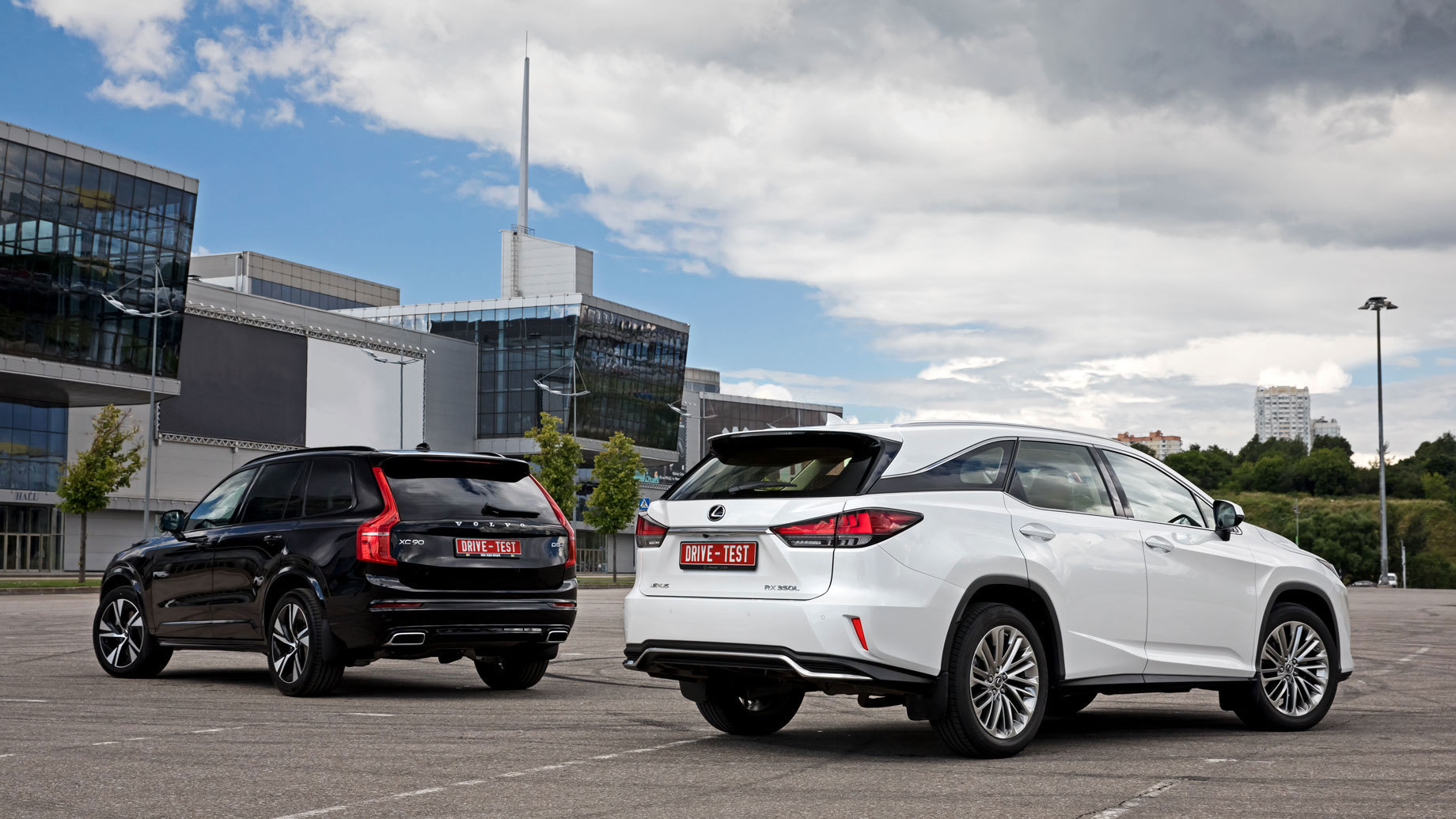
А вся остальная электроника у шведа работает так, как будто их сделали на десять лет позже Лексуса. Панель приборов окрашена, медиасистема более продвинута по функциональным возможностям. Их даже слишком много, ведь физических кнопок почти не осталось, а активировать подогрев сидений или камеру кругового обзора приходится через меню. Адаптивный круиз-контроль ведет машину смелее, есть система подруливания внутри линейки – комплекс Pilot Assist. А Лексус выносит мозг постоянным звяканьем предупреждений о камерах дорожного движения, которые нельзя отключить!
Например, такой момент, как работа электропривода двери багажника. В Лексусе он ползет медленно и шумно, а крышка в итоге оказывается слишком низкой над землей, с риском ударить по голове тех, кто выше 180 см. К Volvo таких вопросов нет. Сами грузовые отсеки сопоставимы по размеру, отделке, возможностям и удобству трансформации. Нюанс в расположении запасного колеса. В RX он крепится под полом снизу. Благодаря этому у нас есть место для шторки в подполье, но сам процесс замены колеса стал сложнее и грязнее.
Суммируя наблюдения, отмечу однозначное преимущество Лексуса в ездовом комфорте. А за перины можно простить даже чуть менее удобный третий ряд сидений. Во всяком случае, это подходит только для подростков в Volvo. Да и вообще провал RX 350L на рынке безоснователен. Если ваша жена не гонщик и не технофрик, купите ей Лексус, хотя сначала посмотрите на разницу в расходе топлива между бензиновым V6 и двухлитровым дизелем Volvo. Впрочем, внешне более современный XC90 тоже лишен стопроцентной гармонии: зачем практичному кроссоверу «громоздкая» подвеска? И много комментариев по мелочам. Ничья.
Оригинальная статья на сайте ДРАЙВ: https://www.drive.ru/test-drive/lexus/volvo/5f2bc0b7ec05c42f63000131.html

Опубликовано Октябрь 06, 2022 • 7м на чтение

